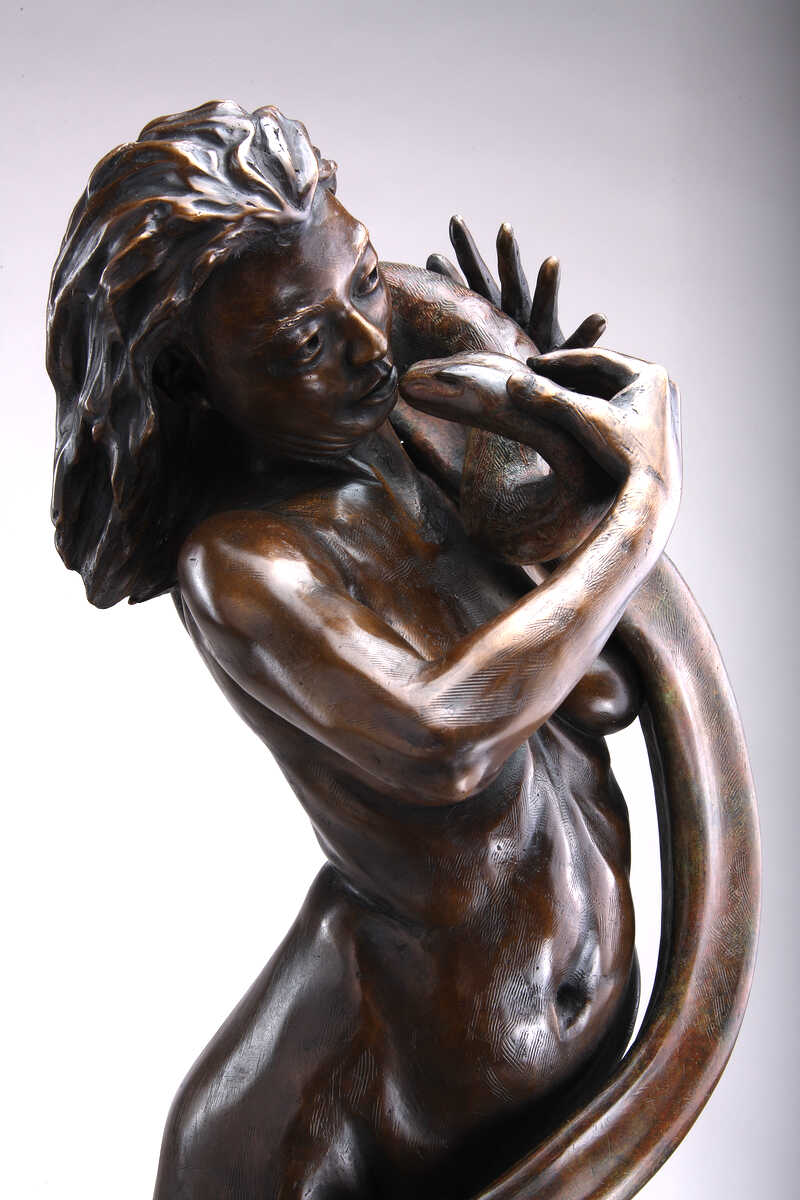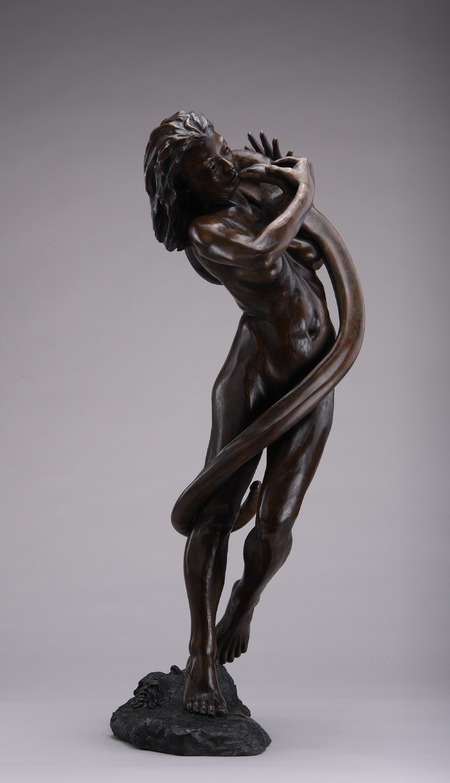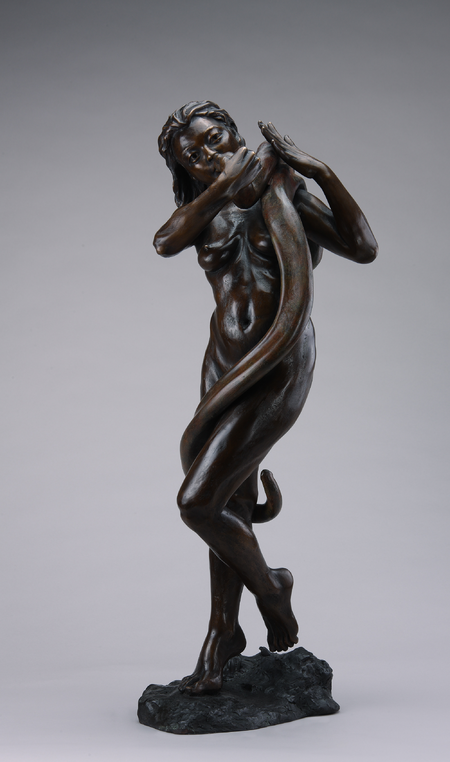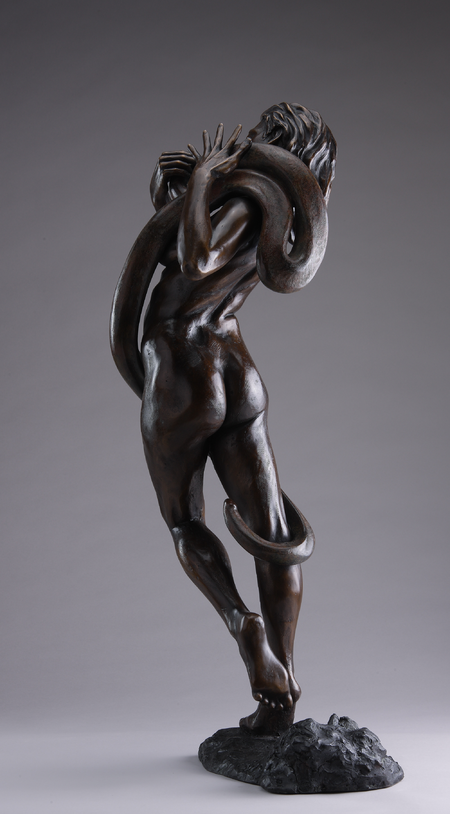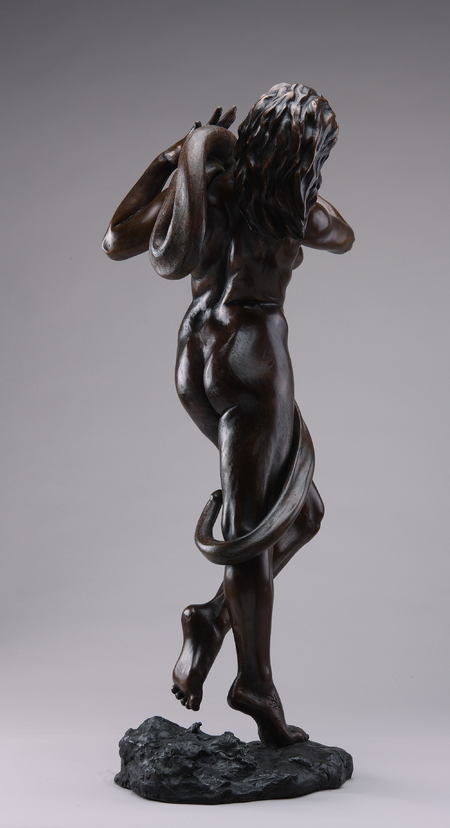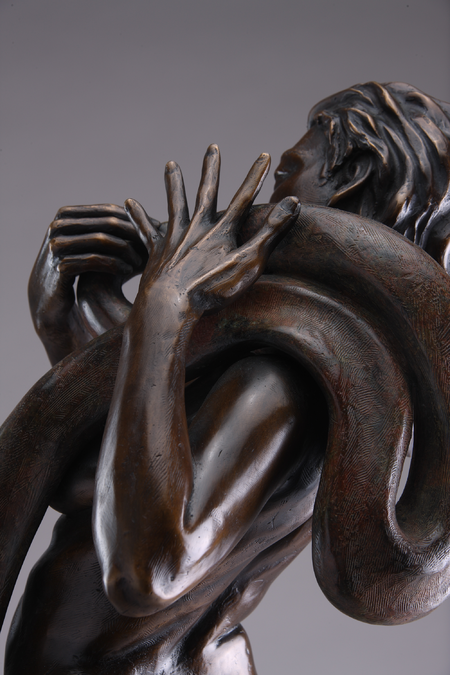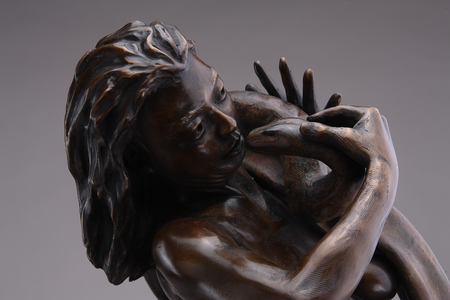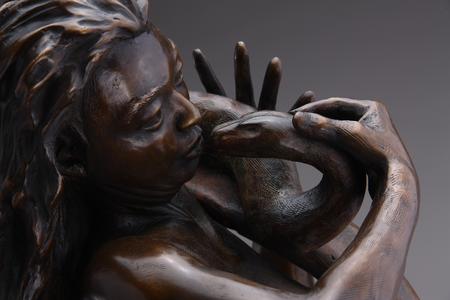ReThink
Seduction of Eve
In the story of Genesis, Eve is personified in the serpent and represents evil, betrayal and deception. The serpent signifies the awakening of the sexual nature of mankind through the introduction of Eve to the fruits of the tree of knowledge and thereby brings about the downfall of man. Alluded to as Eve's first consort, both are portrayed as immoral and deceptive and symbolize the first image of sin.
Throughout history, many cultures have recognized the mysterious dynamism that makes the serpent an important symbol. Often seen as a divine creature, a god that embodies death and rebirth, a symbol of fertility, sexual energy, and immortality, all founded on the serpents’ healing properties of regeneration. Equally, the serpent represents both the masculine and the feminine, as well as symbolizing knowledge and wisdom and being considered evil and subversive.
In the traditional story of Genesis, the serpent is associated with evil, betrayal and deception, and Eve is personified in the serpent as temptress. Following the serpent’s advice, Eve disobeys Gods’ command and consequently brings about the downfall of man. Eve is unjustifiably depicted as the original author of sin, and assigned sole and full responsibility for having enlightened man to the fruits of the tree of knowledge.
Allegorically the serpent signifies the sexual nature of mankind, and is alluded to as Eve's first consort as the logical conclusion to its’ immoral and deceptive nature. This incorporates a charge of material entrapment to augment the “lust” desires introduced by Gods evil adversary, thus the serpent appears as an idealized image of sin and symbol for Satan.
The symbolic significance of the snake includes some ambivalent meanings, representing the masculine element, as suggested by its’ phallic form, the serpent is a recognized symbol of fertility. Yet there are also strong matriarchal associations as the serpent is seen to embody the power of life, renewal and rebirth. Through the shedding of its’ skin the snake symbolizes resurrection and immortality, and consequently enhances the deific aspect of this creature.
In mythology, the serpent is usually considered a female divinity representing the inner power of the human body. The ability of this reptile to shed its’ skin can be interpreted symbolically as a return to the womb or embryonic state, signifying death followed by resurrection or alternatively as a complete regeneration through gestation and birth. Herein the serpent holds the secret of eternal life in its’ ability to rejuvenate and thereby commands the secret of death and the physical and spiritual powers of rebirth.
Further associations with the womb and evil are reinforced in nature, as snakes are seen emerging from holes in the ground and thus associated with a uterine underworld. The association with the concept of immorality is also reinforced through the connection of base desires with the punishment and the degradation afforded to the serpent by God; “upon thy belly shalt thou go”.
Notwithstanding, the serpent is also recognized as a benevolent creature as it taught the couple of God's duplicity, and the recognition of good and evil, in essence providing the knowledge that characterized our species as human.
Alternatively, the serpent is considered as an adversary of man, and a protector of sacred precincts or of the underworld, as a seducer and an unclean creature, yet it is often envisaged as having the soul of a human.
The sculpture depicts Eve at a moment where she is seduced by the serpent, by her embrace she consents to the desires of the imposing reptile.
The work shows the powerful coercive force of the serpent and portrays Eve’s fall as the serpent lures her to temptation. Even though the snake is Eve’s adversary and by becoming her consort signifies the beginning of the life cycle and future of man. The undeserved component of this story will always be the responsibility for the fall of man, that is unjustly placed solely on the female as perpetrator and continues to persecute Eve for seduction where the male is considered the victim rather than a participant.
